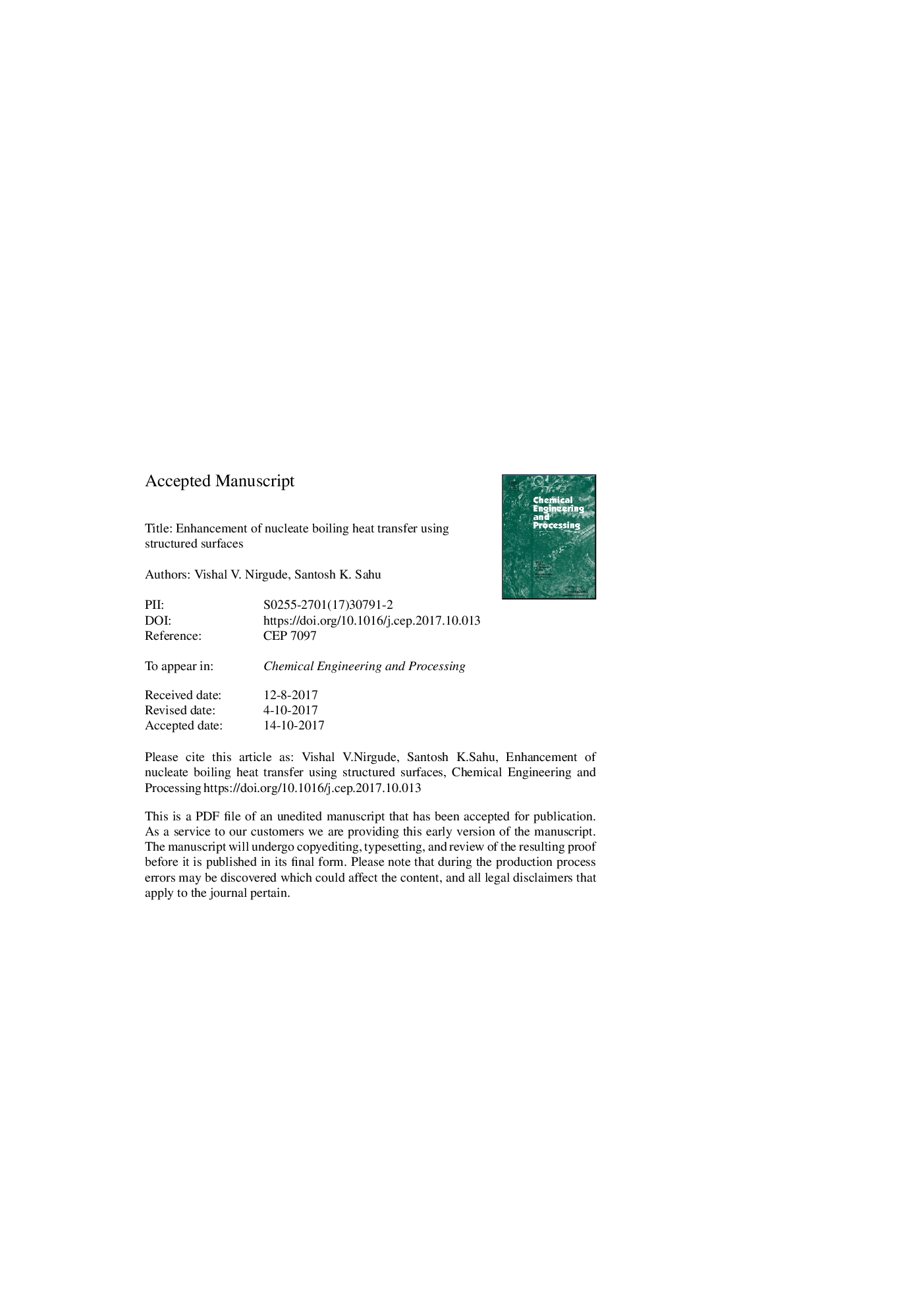| Article ID | Journal | Published Year | Pages | File Type |
|---|---|---|---|---|
| 7089435 | Chemical Engineering and Processing: Process Intensification | 2017 | 39 Pages |
Abstract
In the present study, an experimental investigation has been carried out to investigate the nucleate boiling heat transfer performance of various orthogonally intersecting tunnel structured surfaces. Tests were carried at atmospheric pressure and saturated pool boiling conditions by using water and isopropyl alcohol as pool liquid. The orthogonally intersecting tunnel geometries with varying tunnel depth of 0.5Â mm, 1Â mm and width of 0.61Â mm, 0.725Â mm were developed on copper test sections by using wire-electric discharge machining (Wire-EDM) process. The experimental tests were carried by varying heat flux input in the range of 0-300Â kW/m2 for water and 0-250Â kW/m2 for isopropyl alcohol. The experimental results indicated that the variation in tunnel dimensions significantly affects the heat transfer performance of the surfaces. The comparison of heat transfer coefficients (HTC) indicated that the orthogonally intersecting tunnel structures augmented the boiling heat transfer performance. For water, the heat transfer coefficient was enhanced up to 250% with considerable reduction in wall superheat. Present experimental study reveals that the tunnel structure enhances the liquid transport network to active nucleation sites on the surface delaying dry out and improves liquid vapor interaction on surface.
Related Topics
Physical Sciences and Engineering
Chemical Engineering
Process Chemistry and Technology
Authors
Vishal V. Nirgude, Santosh K. Sahu,
